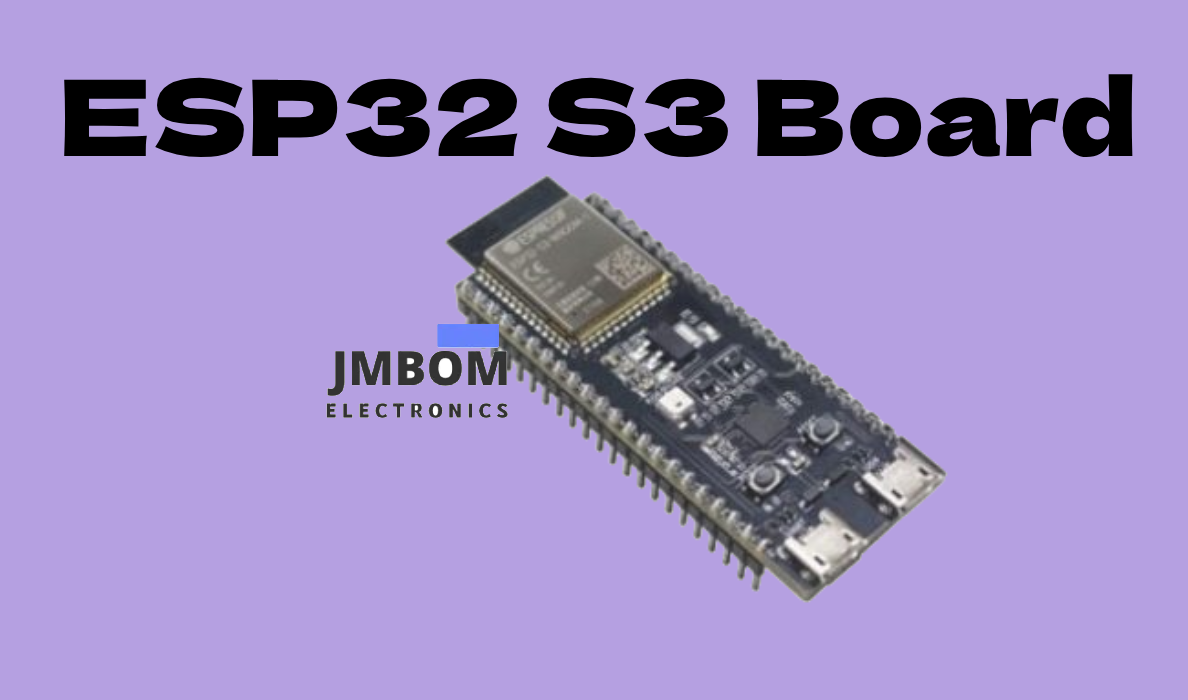

ESP32-S3 vs ESP32: What’s the Difference?
Catalog
Overview of ESP32-S3 and ESP32 BoardsESP32-S3 vs ESP32: Key Differences Between the BoardsConclusionThe ESP32 and ESP32-S3 are among the most widely used microcontroller boards, especially in IoT projects. While they share several features, there are also key distinctions between them. The ESP32-S3 is an upgraded version of the original ESP32, offering built-in USB support, additional GPIOs, and an improved Tensilica core. It also includes an integrated wireless transceiver, Bluetooth 5 support, and a full-speed USB OTG interface. Moreover, the ESP32-S3 is more compact compared to both the ESP32-S2 and the original ESP32.
This article highlights the main differences between the ESP32 and ESP32-S3 boards.
Overview of ESP32-S3 and ESP32 Boards
The ESP32-S3 is powered by a dual-core Xtensa LX7 CPU, running at up to 240 MHz. It features 512 KB of internal SRAM and built-in support for 2.4 GHz wireless, including Bluetooth 5 (LE) and 802.11 b/g/n Wi-Fi, offering extended range capabilities. The board includes 45 programmable GPIOs and supports a wide range of peripheral interfaces.
Compared to the original ESP32, the ESP32-S3 supports larger SPI flash memory with high-speed octal interface, built-in PSRAM, and configurable instruction and data cache, making it more suitable for demanding applications.

Alternatively, the ESP32 is a system-on-chip (SoC) microcontroller that was first introduced in 2016, primarily targeting IoT applications.
It features a dual-core processor along with built-in Bluetooth and Wi-Fi connectivity. The ESP32 is built on the Xtensa LX6 microarchitecture — a 32-bit processor core developed by Tensilica — and is well-suited for wireless and embedded projects that require both performance and efficiency.
ESP32-S3 vs ESP32: Key Differences Between the Boards
The ESP32-S3 and ESP32 are both widely used microcontroller boards designed for embedded and IoT applications. While they share a common design philosophy, there are several important differences in performance, features, and hardware capabilities. Here’s a detailed comparison:
| Feature | ESP32-S3 | ESP32 |
|---|---|---|
| Overview | Enhanced version of the ESP32 board | Original system-on-chip microcontroller |
| Release Year | 2020 | 2016 |
| Processor | 32-bit dual-core Xtensa LX7 | 32-bit single or dual-core Xtensa LX6 |
| SRAM | 512 KB | 520 KB |
| Coprocessors | Includes two ultra-low-power cores: ULP-FSM and ULP-RISC-V | Supports ULP (Ultra-Low Power) core options including Xtensa LX6, LX7, and RISC-V |
| Wi-Fi | 2.4 GHz 802.11 b/g/n with HT20/40, up to 150 Mbps | 2.4 GHz 802.11 b/g/n with integrated high-performance antenna |
| Bluetooth | Bluetooth 5.0 (LE) | Bluetooth 4.2 |
| GPIO Pins | 26 GPIOs, with support for UART, I2C, SPI, and built-in ADC | 34 GPIOs, 2 UARTs, I2C, SPI, and built-in ADC for analog input |
| DAC (Digital-to-Analog Converter) | 2 channels, 8-bit each | Not available |
| ADC | Two 12-bit SAR ADCs with 20 channels | Two 12-bit ADCs with 18 channels |
| Embedded Flash | Up to 8 MB (depending on variant) | 2 MB or 4 MB (depending on variant) |
| External Flash Support | Up to 1 GB (32 MB addressable at a time) | Up to 16 MB (11 MB + 248 KB addressable) |
| External RAM Support | Up to 8 MB (4 MB accessible at once) | Up to 1 GB (32 MB accessible at once) |
| ROM | 448 KB for boot and core functionality | 384 KB for boot and core functionality |
| Security Features | Advanced hardware security including AES-XTS flash encryption, HMAC, digital signature, RSA-based secure boot | Versatile, with built-in wireless and sensor features, but fewer advanced hardware-level security features |
| Cost | Higher than ESP32 | More affordable |
Conclusion
This has been an overview of the key differences between the ESP32 and ESP32-S3 development boards. Both are widely used and popular microcontrollers, especially in IoT and embedded applications. While they share several features, there are notable differences in their architecture, processors, Bluetooth and Wi-Fi capabilities, pricing, peripheral support, and ideal use cases.
The ESP32 is better suited for applications that require higher processing power and performance, while the ESP32-S3 is optimized for low-power applications with more advanced wireless features, particularly in Bluetooth and Wi-Fi.
Now, here’s a quick question: What is the ESP32-CAM?
Subscribe to JMBom Electronics !













